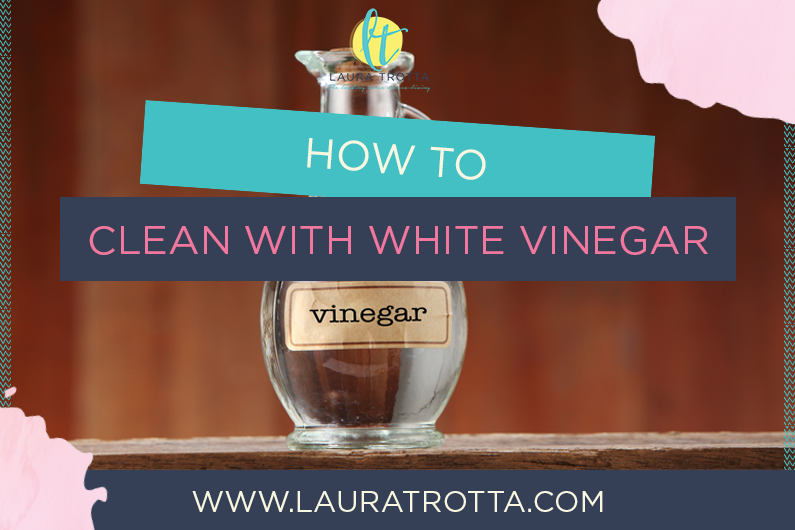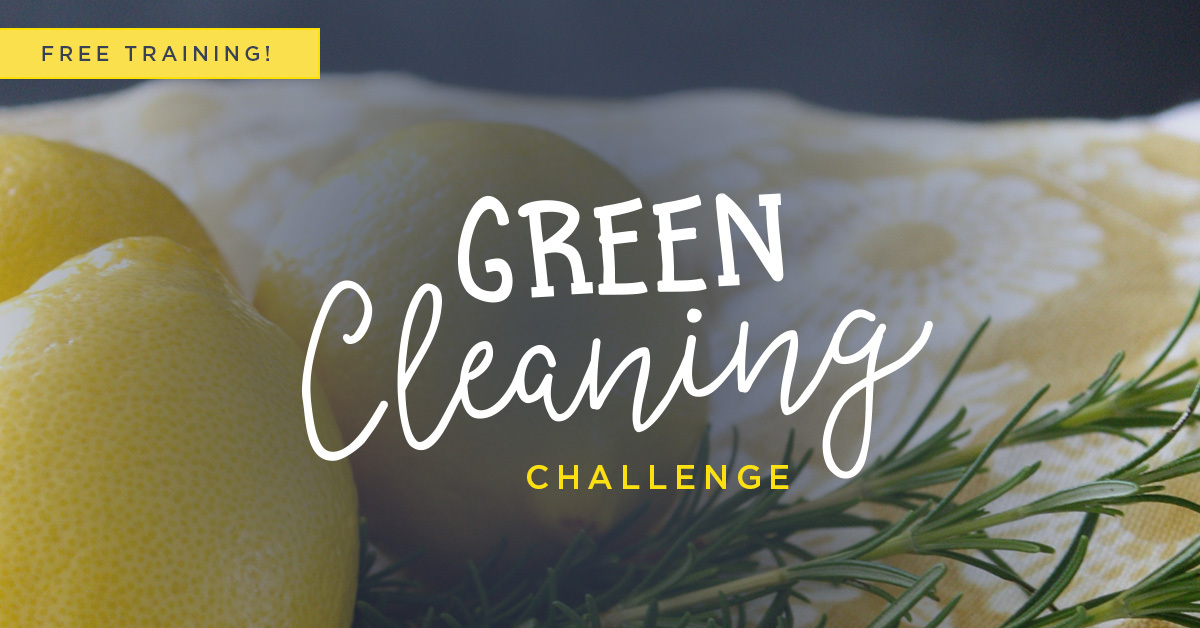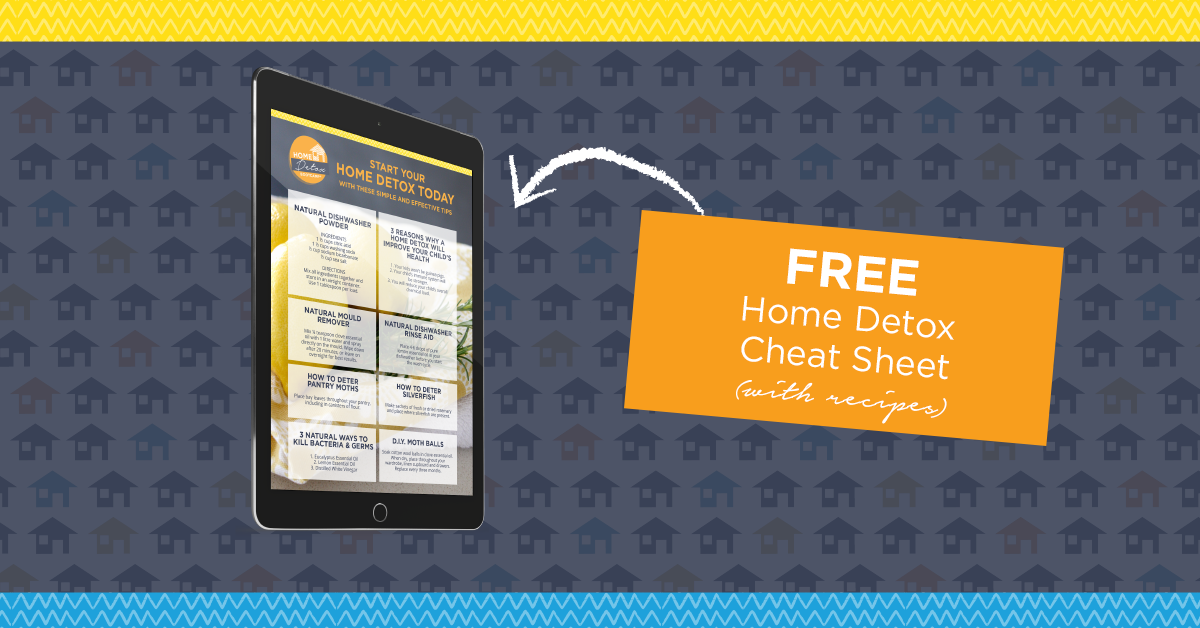White vinegar is a natural, safe and economical way to clean your home. By replacing many common commercial cleaning products with white vinegar you’ll reduce waste, save money and improve your health. In this post I’ll share a wide range of applications for cleaning your home with white vinegar.
Podcast: Play In New Window
Subscribe in iTunes | Stitcher
Detoxing your cleaning cupboard doesn’t have to mean spending a small fortune on luxe eco-cleaners! Join my 5-day Green Cleaning Challenge (delivered online) and I’ll show you how to switch to natural, affordable and effective cleaning products, without spending a cent.
You’ll get daily recipes and tips to help you re-purpose your pantry staples into trusty home cleaners that’ll make it super easy for you to create a healthier you, a healthier home and a healthier planet.
What is White Vinegar?
White vinegar is a weak acetic acid that is produced commercially through a fermentation process (note white vinegar produced by diluting acetic acid is labelled imitation vinegar)
What are the Benefits of Cleaning with White Vinegar?
White vinegar is an amazingly versatile cleaning agent. Its acidity makes it effective for killing most moulds and bacteria and it is fantastic for removing stains from a wide range of surfaces. In fact, white vinegar alone can replace just about every commercial home cleaning product!
White vinegar is widely available, economical and safe to use around the home.
How to Clean with White Vinegar
White Vinegar in the Bathroom
- Shine and remove lime build-up on chrome sink fixtures with a paste of 2 tablespoons of salt and 1 teaspoon of white vinegar.
- Spray and wipe your shower, bath and tiles with undiluted white vinegar and rinse immediately afterwards with water. Take care when cleaning grout as undiluted vinegar can dissolve grout when left in contact. (Note: an alternative it to use a 50:50 white vinegar and water spray with a few drops of tea tree oil to clean).
- Soak showerheads in white vinegar overnight to remove corrosion or mineral build up.
- Disinfect toilet by letting 1 cup of white vinegar sit in the bowl for a few hours or overnight. Scrub well with the toilet brush and flush.
White Vinegar in the Laundry
- Spray full strength white vinegar on stains, collars and underarms before washing.
- Soak colours in white vinegar before washing to prevent them running during the wash.
- Add one quarter of a cup of white vinegar (front loader) and half cup (top loader) to the rinse cycle to prevent garments from yellowing, act as a fabric softener, static cling remover, and attack mould and mildew.
- Clean your washing machine by adding one cup of white vinegar as it fills. Run through a wash and rinse cycle. This will remove soap scum build up in your washing machine and clean the hoses.
White Vinegar in the Kitchen
- Clean benches, tabletops and rubbish bin with a spray of 50:50 white vinegar to water. Test patch on stone benchtops first.
- Place one cup of white vinegar in dishwasher and run through a rinse cycle to remove scum and odours.
- Wipe your hands with white vinegar after chopping strong foods such as onion and garlic to remove pungent smells.
- Pour half a cup of bicarbonate soda followed by half a cup of white vinegar down kitchen drain to unblock it and remove smells. Rinse with warm water after mixture finishes bubbling.
- To clean a coffee machine and remove mineral deposits, fill reservoir with white vinegar and run through a brewing cycle. Rinse thoroughly with water.
White Vinegar Around the Home
- Mop hard floors with a solution of half a cup of white vinegar to 3 litres of warm water. Add a few drops of essential oil (e.g. lemon, eucalyptus) for extra disinfecting power and scent.
- After soaking up liquid from carpet spills, spray stain with 50:50 mix of water and white vinegar. Let it stand for 2 minutes and blot dry with a sponge of cloth. Repeat if necessary. Test patch first.
- Clean windows and mirrors with a spray of 50:50 white vinegar to water. Wipe clean with either newspaper or a cloth.
- After dusting roller and venetian blinds, clean them with a cloth moistened with vinegar Test patch first.
- Remove labels from articles without damage by moistening them with white vinegar. Let sit for at least ten minutes then remove.
- Deter ants by spraying vinegar along doorways, windowsills, benches and anywhere ants are likely to appear. Test patch first and dilute if necessary.
- Spray or pour white vinegar directly on garden weeds to kill them.
Safety Precautions of Cleaning With White Vinegar
Due to its mild acidity, test white vinegar on surfaces you wish to clean (especially grout and stone) prior to use. If used in too strong concentrations it can damage some surfaces.
Final Thoughts
White vinegar is a natural, safe and economical way to clean your home. By replacing many common commercial cleaning products with white vinegar you’ll reduce waste, save money and improve your health.
If you’d like more tips on breaking up with toxic chemicals in your home, check out my Home Detox Boot Camp. It’s there where I guide you step by step through the process of replacing toxic chemicals in your home with effective, economical and natural alternatives.
OVER TO YOU!
What are your best uses for white vinegar in your home? Share in the comments below!
Like this post? You’ll also love:
My Favourite Natural Cleaning Products
Five Ways to Improve Indoor Air Quality
The Health Impacts of Household Dust
- Sustainable Home Design- factors to consider to maximise sustainability - July 28, 2022
- Advantage and Disadvantages of Tiny Houses - May 31, 2022
- How School Strike 4 Climate is Empowering Youth to Fight for Their Future - May 1, 2022




 Laura Trotta is one of Australia’s leading home sustainability experts. She has a Bachelor of Environmental Engineering, a Masters of Science (in Environmental Chemistry) and spent 11 years working as an environmental professional before creating her first online eco business, Sustainababy, in 2009. She has won numerous regional and national awards for her fresh and inspiring take on living an ‘ecoceptional’ life (including most recently winning the Brand South Australia Flinders University Education Award (2015) for the north-west region in SA and silver in the Eco-friendly category of the 2015 Ausmumpreneur Awards). With a regular segment on ABC Radio and with her work featured in publications like Nurture Parenting and My Child Magazine, Laura is an eco thought leader who’s not afraid to challenge the status quo. A passionate believer in addressing the small things to achieve big change, and protecting the planet in practical ways, Laura lives with her husband and two sons in outback South Australia.
Laura Trotta is one of Australia’s leading home sustainability experts. She has a Bachelor of Environmental Engineering, a Masters of Science (in Environmental Chemistry) and spent 11 years working as an environmental professional before creating her first online eco business, Sustainababy, in 2009. She has won numerous regional and national awards for her fresh and inspiring take on living an ‘ecoceptional’ life (including most recently winning the Brand South Australia Flinders University Education Award (2015) for the north-west region in SA and silver in the Eco-friendly category of the 2015 Ausmumpreneur Awards). With a regular segment on ABC Radio and with her work featured in publications like Nurture Parenting and My Child Magazine, Laura is an eco thought leader who’s not afraid to challenge the status quo. A passionate believer in addressing the small things to achieve big change, and protecting the planet in practical ways, Laura lives with her husband and two sons in outback South Australia. 


